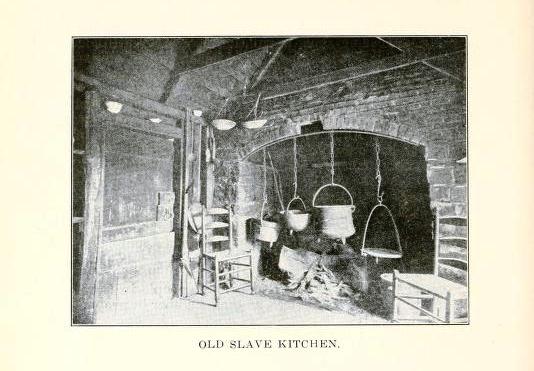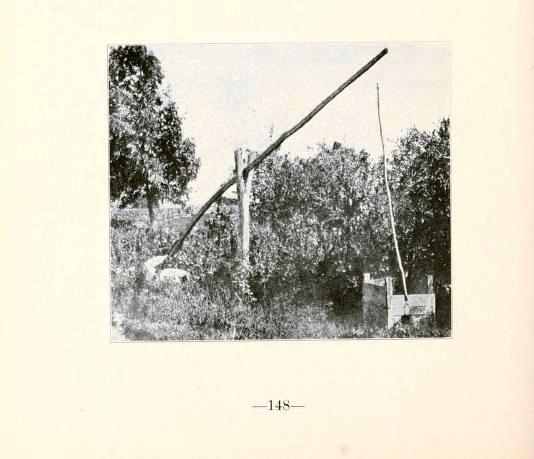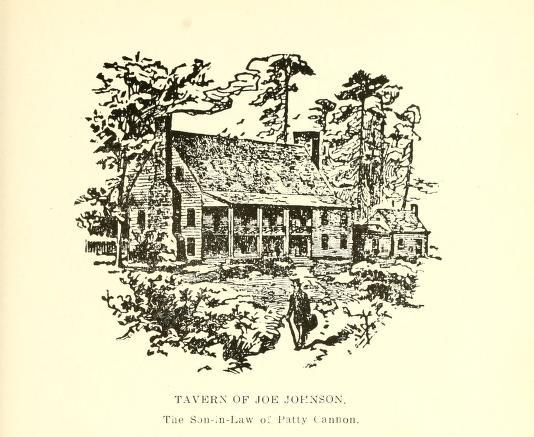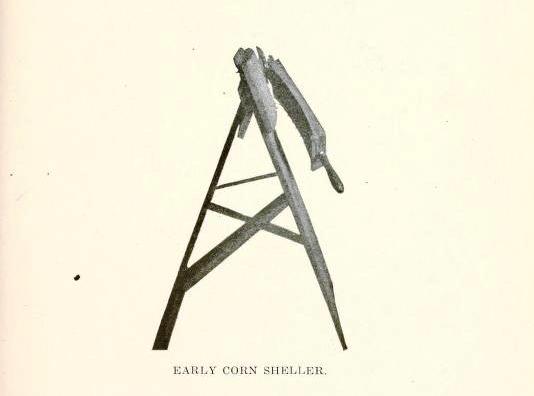The History of Caroline County, Maryland, From Its Beginning
Slavery
I. Origin
The period at which slavery was introduced into Maryland is somewhat
indefinite but some historians claim Claiborne had negro servants at the
time of settlement of Kent Island.
The Royal African Company, chartered
in 1618, whose chief profits came from the importation of negroes into
the American Colonies was the first organization for slave trade.
The traffic of this company was greatly encouraged by the King.
The first record we find of Maryland
slaves is that of 1708 when the London Board of Trade wrote to Gov.
Seymour concerning slave importation by this company
(Royal African). The Governor in reply stated that Maryland trade
was not through the above company but through independent traders or
"interlopers," who were licensed.
II. Growth of Slavery
From 1700 to 1750 slavery was rapidly on the increase. Governor Seymour in a letter of 1708 said, "At present the trade seems to run high, there having been between six and seven hundred Negroes imported hither this year." This increase then changed to a decline which soon became rapid.
III. Decline of Slavery in Maryland
Scharf says--
"In no state of the Union had
emancipation so rapidly progressed as in Maryland; and while several of
the counties had now (1833) a larger number of slaves than of white
inhabitants, yet there were in the state at this time, not only the
largest proportion, but actually much the largest number of free colored
people of any state in the Union.:
By comparing the census reports we
see as follows:
| Years | Whites | Slaves | Free Colored |
| 1755 | 107,108 | 46,356 | ----- |
| 1800 | 216,356 | 105,635 | 19,587 |
| 1860 | 516,128 | 87,188 | 83,718 |
Approximately the change was as follows: 1755 all colored people in
Maryland were slaves; in 1800 about one-fifth were free; in 1860
one-half were free.
Then, too, free Negro property
holders were allowed to vote in Maryland until 1851, when it was
constitutionally restricted.
An American Colonization Society was
formed in Washington during December 1816, for the purpose of colonizing
in Africa free people of color from America.
In January 1831 Maryland organized an
auxiliary for the same purpose. McSherry says, "It was therefore
determined to establish an independent organization in the state and
plant a separate colony under the name of 'Maryland in Liberia.'"
Proving the activity of this body we
find that in October 1831 colored immigrants numbering 31 were sent to
this colony. Also the December session of Legislature made an
appropriation of $10,000 each year for 26 years, to be used for benefit
and transportation to Africa of Negroes. In 1852 when this act
expired the Assembly reenacted the law to be enforced for six years.
Then again, at its expiration in 1858 for four more years.
To again quote from McSherry,
"We are, therefore, justified in maintaining that no State did as much as Maryland toward emancipation and improvements of the condition of the African race within her borders. Her early statutes protected them from cruel treatment and authorized their manumission. She looked to their gradual and voluntary removal as the only means of solving the difficult problem which their presence involved."IV. Slavery in Caroline
Caroline County was active in these matters and her rapidly decreasing
slave population shows her attitude. Even in the days when this
section belonged to Dorchester and Queen Anne the slave population was
small as compared with other counties.
In 1712 Queen Anne and Dorchester,
which at that time included Caroline County, held comparatively few
slaves. Queen Anne with an entire population of over 3,000 had
only 550 while Dorchester with practically the same number of whites
held only 387 slaves.
By the census of 1790 we find the
highest number of slaves held by any one man in Caroline County was 57.
The holdings of the majority of the people owning slaves at all varied
from one to five Negroes, while those with larger holdings less than
fifty families owned more than ten slaves.
The following table shows the gradual
decrease of slaves and the increase of free colored people in Caroline
from 1790 to 1840 as well as their number in proportion to whites.
| Years | Slaves | Free Colored |
White | Total |
| 1790 | 2,057 | 421 | 7,023 | 9,506 |
| 1800 | 1,865 | 602 | 6,579 | 9,226 |
| 1810 | 1,520 | 1,001 | 6,932 | 9,453 |
| 1820 | 1,574 | 1,390 | 7,144 | 10,108 |
| 1830 | 1,171 | 1,652 | 6,247 | 9,070 |
| 1840 | 768 | 1,727 | 5,373 | 7,868 |
Slave trade was never carried on to any extent in Caroline County; Marcy
Fountain and Patty Cannon probably
the best known who "traded" -- that is sold South into Georgia.
Then as Maryland, and with her
Caroline County, was rapidly transporting or manumitting her slaves came
the year 1861 and Maryland true to her principles stayed in the Union
and her spirit is expressed in a quotation from a prominent Baltimore
newspaper of that day--"God forbid that a time should come when our
people shall be unwilling to let the flag of the Union float over them."

The following is an account of an unknown master giving freedom to four of his slaves:V. Miscellaneous Court Orders
An account of the sale of a Negress and her child in here given:
Know all men by these presents that I Jeremiah .......... of Caroline County, planter, have and in the commission of the summon of sixty pounds of current money to me in hand and before the sealing and delivery of these presents by Isaac .......... the receipt whereof I do hereby acknowledge, having bargained and sold by these present, do bargain and sell unto the said Isaac .........., one Negro woman lately the property of Samuel ..........., deceased, called Fann; also her child called Rachel to have and to hold said Negroes and each of whom by these presents we bargained and sold unto the said Isaac .........., his executors, administrators, and assigns forever, and the said Jeremiah .........., for myself by executors and administrators or any other person or persons whosoever shall and will forever warrant and defend the same as witness of my hand and seal this sixteenth day of May 1774.
Various items in regard to slave which were brought up at court are here given:I am in possession of four Negroes names, Sarah, Lucy, Eve and Pompey and being desirous to give then all their liberty in a legal manner therefore do discharge the said Sarah, from my service from that day and date thereof, and Lucy and Eve and Pompey shall be free when they arrive unto the age of twenty and one years of age and doth covenant and agree both for myself and for my heirs executors and administrators. Lucy was born on the fifteenth of August in the year 1768; the said Eve was born on the 27 day of November 1768 and Pompey was born on the 4th day of September in the year of 1772.
Given under my hand and seal this nineteenth day of March in the year 1774.
Signed, sealed and delivered in the presence of Jacob Boone {seal}
It was necessary for every colored person even though free to make known to the clerk of the court his or her intention to leave the province for a stated time.March 1776 On petition of Nathaniel Potter's Negro Pompey, slave of the said Nathaniel Potter, is by the Court set levy-free for the future.
November 1776
On petition of Christopher Driver ordered that he be exempt from the payment of any public tax or levy for his old Negro man Joseph, for the future.
ToThe Clerk would then issue a certificate like the following:
Joseph Richardson, Esq.,
Clerk of Caroline County Court.
I the undersigned, a free Negro of Caroline County, wish to visit the city of Philadelphia for the purpose of seeing my brother. By an Act of the Assembly, of this State, it is necessary my intention of leaving this State should be known to you. It is my intention to return here again within three days from this date.
Given under my hand this 12th day of October 1841.
State of Maryland, Caroline County, to wit:Whereas application has been made to me by a colored woman named Mahala Scott for a certificate of her freedom agreeably to the Act of Assembly in such case made and provided by which said Act, free Negroes and Mulattoes are permitted to travel out of this state, upon the obtaining of a certificate of being free born, And whereas also upon the oath of Sarah Williams, of Caroline, that the said colored woman named Mahala Scott, for whom this certificate is made, was free born. I do therefore grant her said application and hereby certify that she is seventeen years of age, or thereabout, about five feet high, of a complexion nearly black, was born and raised in Caroline County, and has a large scar of a burn across her right wrist, and a scar of a cut on the inside of her right wrist-joint, another scar of a cut on the inside of her eye and no other notable mark or scar that I have discovered. In testimony whereof I hereunto subscribe my name and affix the public seal of my office this 14th day of March in the year of our Lord eighteen hundred and twenty-six.
Richardson
Clerk of Caroline County Court. Joseph Bell
Test:
Joshua Jump.VI. Acts of Assembly
In 1822 laws regarding slaves were enacted as follows:
"BE IT ENACTED By the General Assembly of Maryland, That from and after the first day of October, in the year one thousand eight hundred and twenty two, it shall be the duty of the constables of Worcester and Caroline counties, to arrest and bring before a justice of the peace, any slave or slaves that may be going at large and bring him, her or themselves within their respective hundreds, or who may not have a fixed home in the family or on the estate of his, her or their owner, or be hired with his, her or their owner.The following may serve to show conditions in part:"AND BE IT ENACTED, That in all cases where a slave or slaves shall or may be brought before a justice of the peace under the provision of the first section of this act, if it appear to the satisfaction of the said justice of the peace, that said slave or slaves so arrested and brought before him, were going at large in violation of an Act of Assembly passed in April session seventeen hundred and eighty seven entitled, An Act to prevent the inconveniences arising from slaves being permitted to act as free, and the supplements thereto, or of this Act, he shall forthwith issue an order to the constable who shall or may have brought the said slave or slaves before him, to his such slave or slaves for the entire balance of the year in which they may have been arrested; and for each examination of slave had before him under this acts, a justice of the peace shall be entitled to twenty-five cents, to be levied on the county as part of the county expenses for the ensuing year."
"BE IT ENACTED, by the General Assembly of Maryland, That all such parts of the act of the Assembly passed at September session, seventeen hundred and twenty-three, chapter fifteen, which directs punishment of negro or other slaves by cropping their ear, be and the same is hereby repealed."
"AND be it enacted, That for the offense specified in the act thus repealed, punishment by whipping not exceeding thirty-nine stripes, shall be and is hereby substituted."
In 1858 James Wheeler, a free colored man, living near Denton had acquired some real estate through his industrious efforts and being desirous of leaving same to his children at his death, had to have the Legislatute authorize him to bequeath his property to his children at his death as in the case of white people. Without this law his children would not have secured his property by will.
A few interesting extracts from wills probated in Caroline County are given as examples of the provision for slaves by their masters:Two old negroes named Bacchus and Silvey are to be taken good care of and well treated by my children. I direct that they shall never be sold or disposed of.I give and devise to all my negro slaves freedom, liberty and freedom.
I give unto my negro man Essex, two acres of land during his life.
I desire that my son shall receive but one shilling from my estate if he refuse to free all his slaves upon his becoming sixteen years of age.
I give and bequeath to my negro woman, named Esther, her youngest child named Judy, to her forever.
I give unto my negro man Will a donation of five pounds current money per year.
I give unto my son William, old Bet, whose life is to be made comfortable.
CARL - The Last Slave"Gone are the days, when my heart was young and gay,
Gone are my friends from the cotton fields away;
Gone from the earth, to a better land I know,
I hear their gentle voices calling Old Black Joe."We found him sitting in the twilight, his eyes clear and bright for all his ninety years, yet fills with dreams of the past. We had met his grandchildren at the door, hastening to some entertainment, and the room was filled with the happy confusion of their outgoing.
Cheerily he greeted us. Then by degrees we led him to talk of bygone day,--his days of bondage. Happily he spoke of the, of his home life, of his master, of tobacco days in Maryland. Once when questioned he told of the fear of being sold to the cotton plantations in Georgia. Then his eyes blazed with the fire of youth and his voice took on a different tone.
Once more his mind turned to the happier vein of thought and told of driving old Massa to church in Greensboro, sitting outside under the rustling green trees, listening to the birds and bees until the service had ended. "Ah!" he said, "He was a good master."
Quietly his voiced wandered on telling of plantation life in Caroline County and as the light in the room dimmed slowly, his gray head sank forward and he sat silent, with his hands resting on his cane, dreaming of the past. We rose and passed out into the darkening night, leaving him there--the last representative of slavery days.Feb. 21, 1919 - LAURA COCHRANE,"I'm coming, coming, For my head is bending low,
I hear those gentle voices calling Old Black Joe."
After a visit to last slave in Greensboro.


SLAVE DEALERS
Altho Maryland was a slave state, it is generally known that previous to
the Civil War half of her people were opposed to slavery and public
sentiment strong against the slave traffic, which, nevertheless, was
carried on to some extent along the Maryland and Delaware peninsula.
Chief among the dealers were Patty Cannon, Joe Johnson and Massy [sic] Fountain.
Patty Cannon and Joe
Johnson, her son-in-law, kept a tavern at Johnson's Cross Roads, now
Reliance. The location was ideal for their nefarious purpose, for
the house was on the border of Sussex, Dorchester and Caroline counties,
twenty miles from a court house and ten from a town of any size.
Under the strangely sloping roof of this hostelry was a concealed garret
which served as a pen for captive slaves and free Negroes who had been
kidnapped to sell. Scattered about the counties, Patty
Cannon had secret places where her agents collected
victims. The poor Negroes who were luckless enough to fall into
her hands were sent to one of those hiding places until taken in charge
by a southern trader, who to prevent any trouble arising during their
detention and journey handcuffed them together in what was known as a
"coffle."
A force of men was employed to kidnap
free Negroes and indeed stories are told of the like disappearance of
white people whose complexion resembled that of mulattoes. "Aunt
Patty," as she was commonly called, often assisted in this work and
is credited with capturing men single handed, so great was her physical
strength. She is still remembered by a few old people in the
county as a short, thick-set woman with black hair and eyes, vivid
coloring, and rather handsome in her cold, bold way.
Joe Johnson was a staunch ally
in all Patty's schemes. After having been
captured in Delaware and flogged at the whipping post for some unlawful
business, he confined his activities to Maryland.
Not only were Patty
Cannon and Joe Johnson accused
of illegal transactions in connection with the slave traffic, but other
accusations such as robbing the mails, and killing travelers who stopped
at the tavern and were suspected of having considerable money with them.
After years of terrorizing the neighborhood, Patty
Cannon was delivered by the Maryland authorities to
Delaware officials. Before the time for her trial, however, she
died in Georgetown Jail. This was suppose to be a great relief to
many prominent people throughout the state, as in the course of a court
trial they would undoubtedly have been exposed as accomplices in some of
her questionable transactions. Joe Johnson made
his escape and no definite information was ever found as to his
whereabouts.
Massy Fountain, one of the prominent men in
the Bridgetown community about 1820, was also a slave dealer.
Tradition has it that he was one of Patty Cannon's
crowd of kidnappers, but we find no proof of this and he was never
accused of other crimes of which she was instigator. Certain it
is, however, that he bought and sold slaves. Maryland slave
owners, feeling it a disgrace to deal openly for Negroes, would
secretyly bring them to Fountain, who in turn would
sell them to southern dealers. The cellar of the Fountain home
was used as quarters for the darkies until convenient for the dealers to
move them south. This being "sold south into Georgia," as the
slaves termed it, was the greatest terror of their lives.
Fountain was a man of
considerable means and owned large tracts of land in the county.
He was one of the most influential men in upper Caroline, and greatly
feared in political affairs, until his death in 1864. His grave
may still be seen in the Bridgetown church yard, just over the boundary
line in Queen Anne's county.
